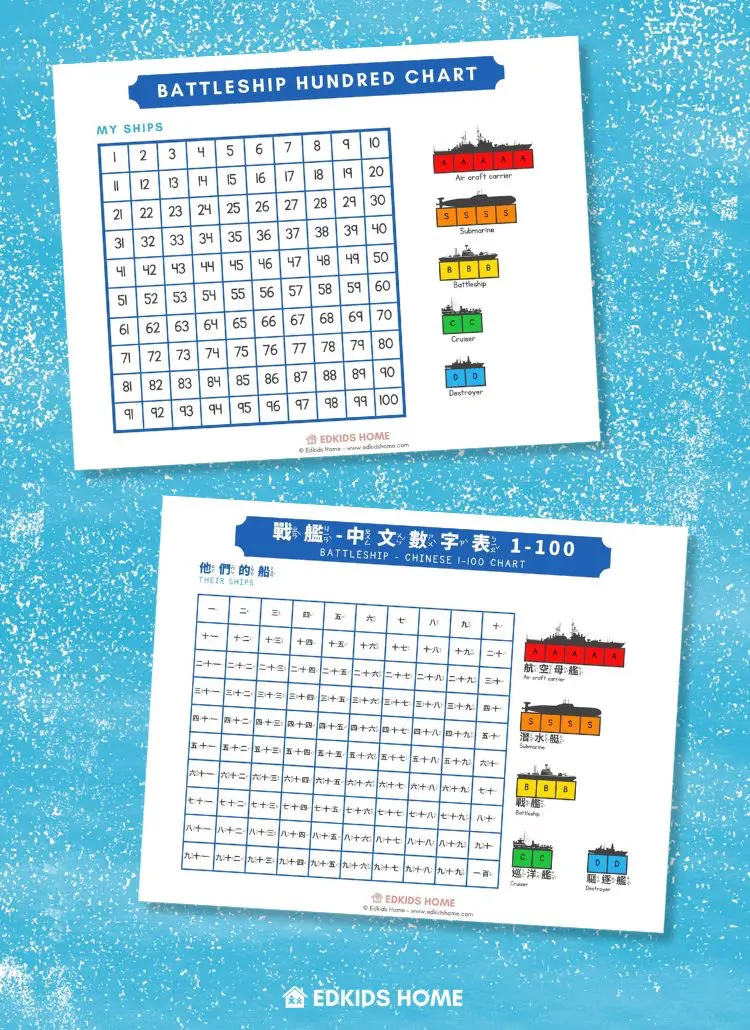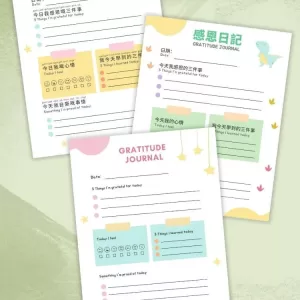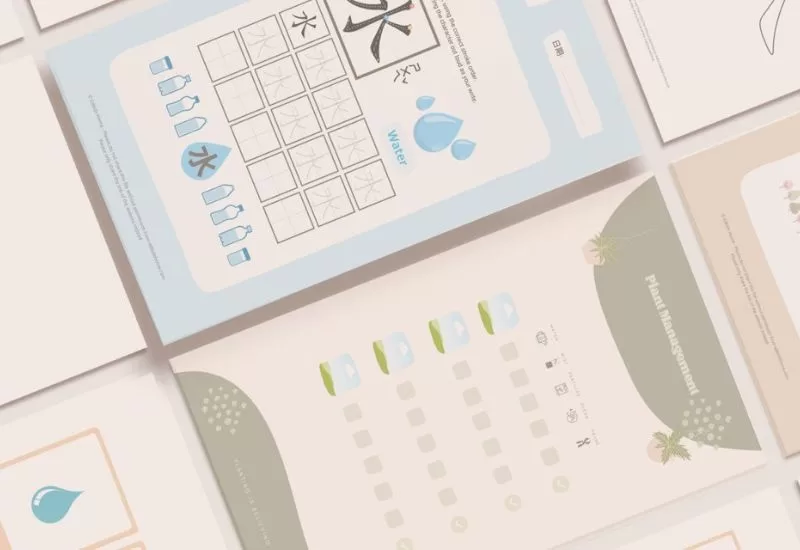
Let's be real, raising grateful kids in today's fast-paced and entitlement-filled world can feel like a tough battle. But hey, don't stress, you're not alone and it's totally doable! Teaching kids to appreciate the little and big things in life is a lesson that pays off big time.
I've got two amazing kids who are surrounded by love and gifts. But they were starting to take things for granted. So, we hit pause and had a chat about gratitude. We kept it simple – saying ‘thank you' for every little thing, daily thankfulness chats, and giving back to those in need. It wasn't always easy, but it made a big difference. They learned to cherish the little things and that gifts are wrapped with love.
“Gratitude is now a part of their lives. It's not just a virtue; it's a way of life.”
Why Do We Need to Teach Gratitude In Kids?
Gratitude is more than just good manners; it's a crucial aspect of children's and adolescents' well-being and development. Multiple studies have highlighted its importance:
- A study published on tandfonline.com found that gratitude interventions could benefit children and adolescents, positively influencing their affect1.
- Another research on Springer highlighted the role of gratitude in mitigating the negative impacts of materialism in adolescents2.
- A study on Springer also suggested that gratitude might motivate early adolescents to contribute to society3.
- Research published on NCBI indicated that during challenging times like a pandemic, simple acts of gratitude, such as acknowledging a good run or hugging your child, could provide emotional upliftment4.
These studies underscore the importance of cultivating gratitude in kids, not just for their personal growth but also for their broader contribution to society.
13 Effective Strategies for Teaching Gratitude to Children
Discover these 13 effective strategies to cultivate a deep sense of gratitude in your kids, empowering them to appreciate and cherish the incredible blessings that life bestows upon them. So, let's dive right in and join forces to nurture a generation of grateful and appreciative kids!
1. Model Gratitude
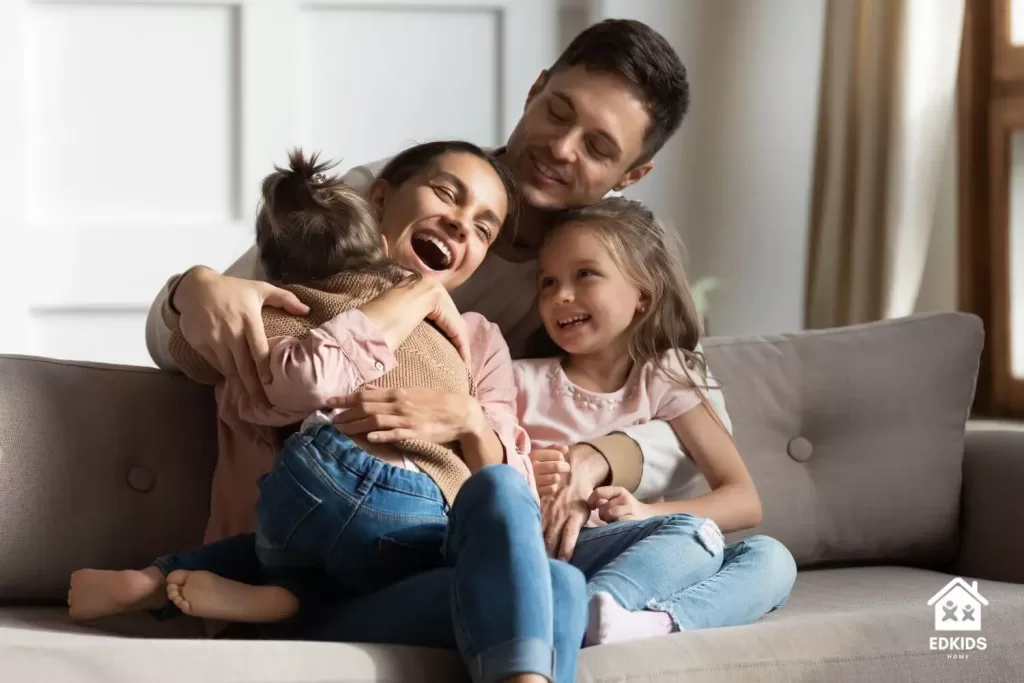
Kids learn by example. So, it's important to set a good example when teaching gratitude to your kids. Show them that you appreciate the little things by expressing gratitude for acts of kindness or simply saying thank you often. Kids are likely to pick up on this and become more grateful themselves.
Examples
- “I am grateful for the sunshine today because it makes me feel happy.”
- “I am thankful for having such kind friends who always make me smile.”
2. Say Thank You
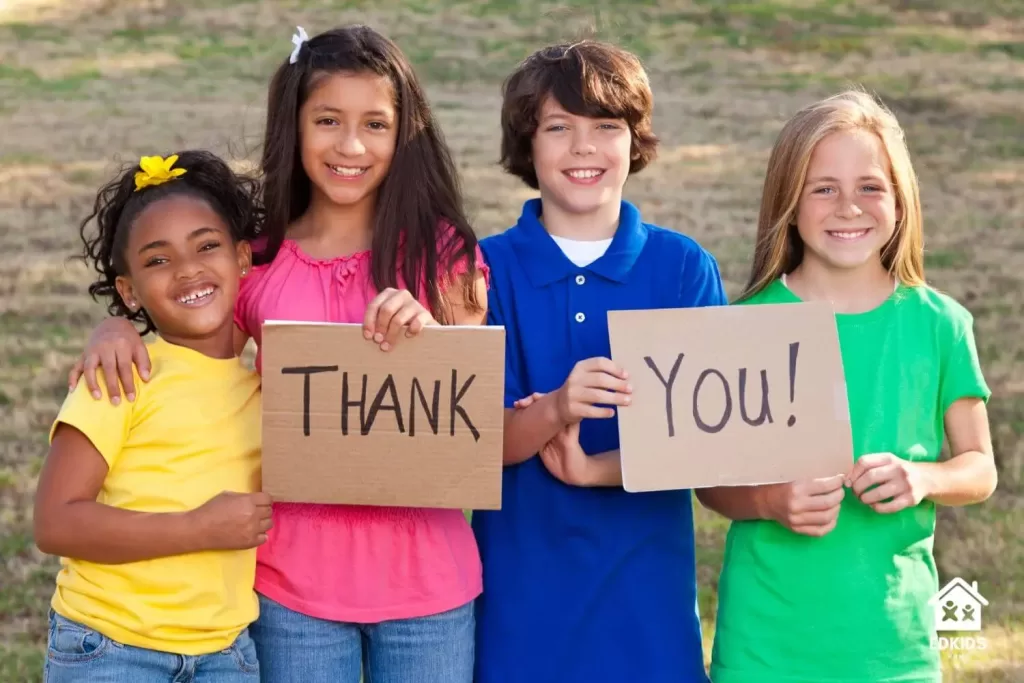
Don't forget to remind your child to say thank you when someone does something nice for them. It's a simple act of gratitude that can really brighten someone's day.
Now, I know that forcing a “thank you” may not immediately inspire genuine gratitude, but it's still an important first step. It helps kids recognize when others have given them something, whether it's a cool gift or just their time.
Also, keep an eye out for those moments when your child shows gratitude without any prompting. Let them know you noticed and give them some props.
Examples
- “Hey, I really liked how you thanked your friend for sharing with you today”
- “Nice job remembering to say ‘thank you' to your teacher when she reminded you to grab your backpack.”
3. Share Gratitude at Mealtimes

Mealtime is a great chance to share some gratitude with your kids. Before digging in, take turns and share one thing that each person is thankful for. It can be something serious or silly, as long as it's something they appreciate. This practice helps kids become aware of the things they have and encourages them to reflect on what they value.
Don't forget to show gratitude during mealtimes by thanking the person who cooked or expressing appreciation for the food. It's a way to teach kids that there's always something to be thankful for, even in everyday tasks.
Examples
- “I am grateful for this delicious dinner and for Mommy who spent time making it for us.”
- “I appreciate having a warm, cozy home to eat our meals in.”
4. Ask Questions About Gratitude

The Raising Grateful Children Project at UNC Chapel Hill found that gratitude has four parts:.
- Noticing – Recognizing the things you have to be grateful for.
- Thinking – Pondering why you've been given those things.
- Feeling – The emotions you experience as a result of the things you've been given.
- Doing – How you show appreciation.
Asking your kids questions about these four parts can help them understand the concept of gratitude better. For example, you could ask:
- “What are three things in our lives that we should be grateful for?” (noticing)
- “Why do you think it’s important to say thank you when someone does something nice for us?” (thinking)
- “How did you feel when your friend shared their toy with you?” (feeling)
- “What is something we can do to show our appreciation for someone else?” (doing)
5. Create a Gratitude Jar
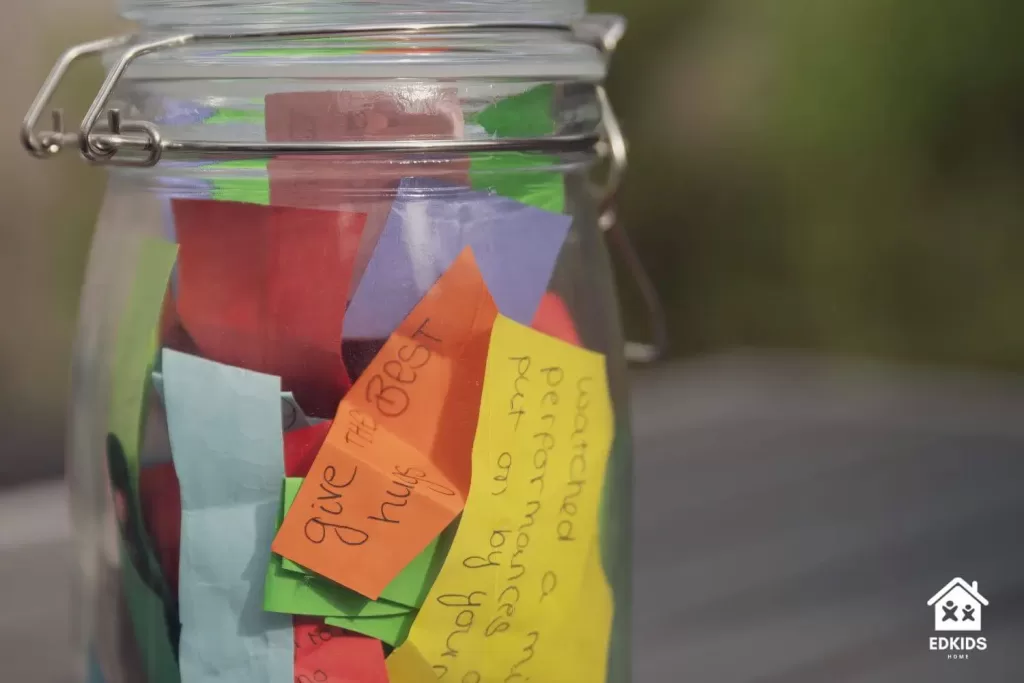
Another fun activity to teach gratitude is by creating a gratitude jar. Have your kids decorate a jar and write down things they are thankful for on small pieces of paper. They can add to the jar daily or whenever they feel inspired.
You can also take turns reading the notes from the jar during family mealtimes or before bedtime. This reinforces gratitude and encourages everyone in the family to appreciate the little things in life.
Examples
- “I am grateful for my best friend because they always make me laugh.”
- “I am thankful for having a warm bed to sleep in every night.”
6. Give Back as a Family
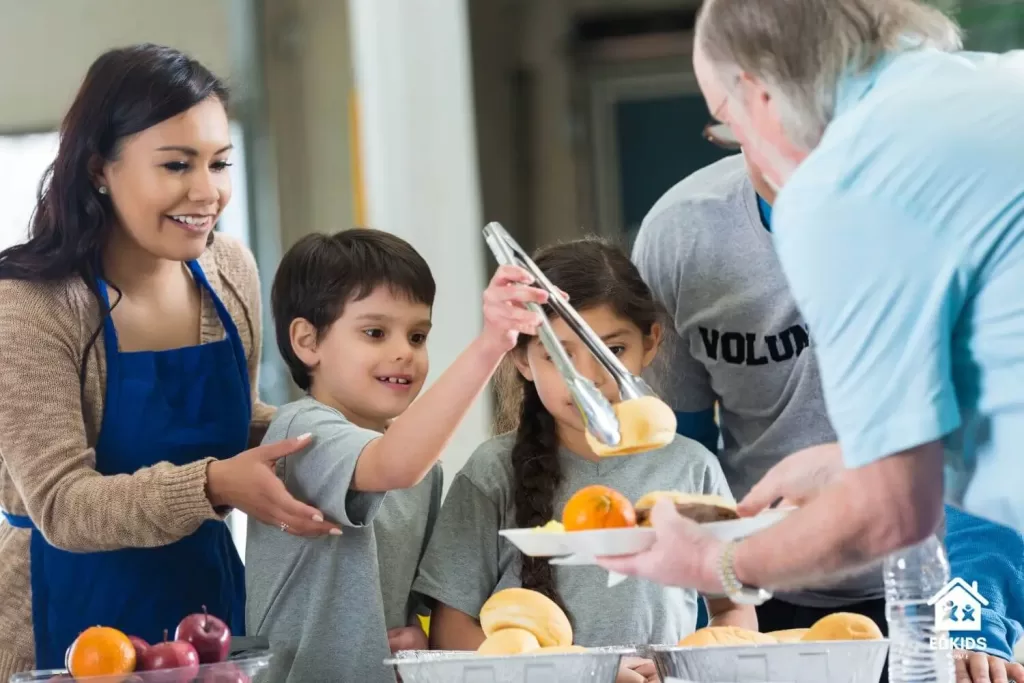
In addition to encouraging your kids to help others, it's also essential for families to give back together. This can be anything from volunteering at a local charity or donating goods to those in need. By participating in these activities as a family, you are showing your kids the importance of giving back and being grateful for what they have.
Examples
- “Let’s spend a Saturday morning helping out at the food bank as a family.”
- “We have so many clothes we no longer wear. Let’s donate them to families in need.”
7. Create Thank You Videos/Notes
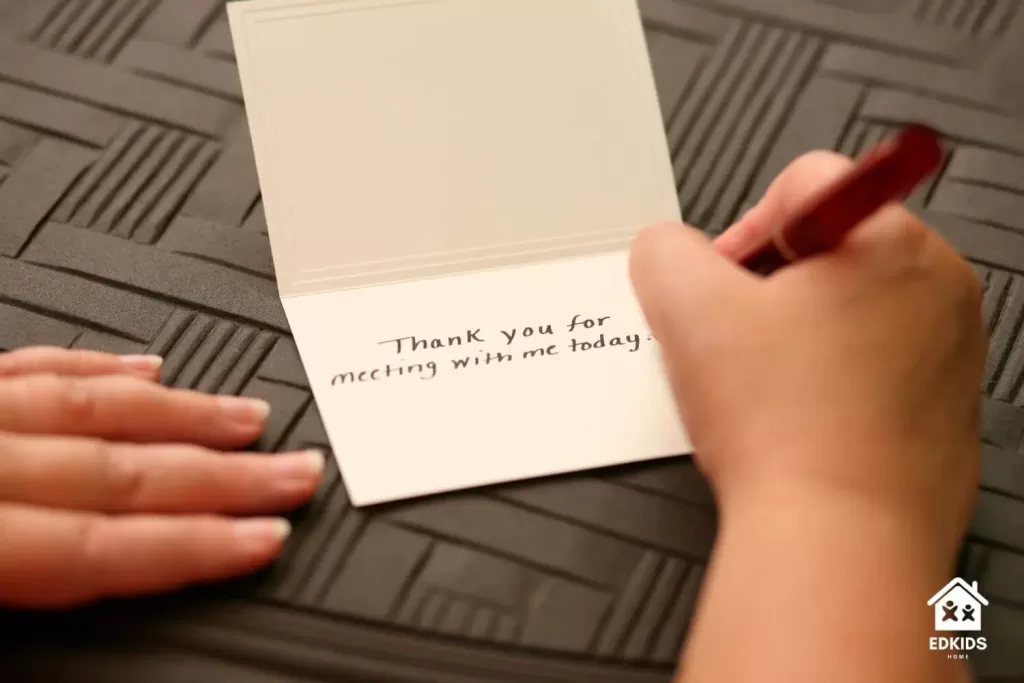
In today’s digital age, creating thank-you videos or notes is a fun and creative way to express gratitude. Have your kids make a video or write a note thanking someone for something they did that made them feel grateful. This practice encourages kids to reflect on the kind acts of others and express their appreciation.
Examples
- “Why don't we send a video to your aunt to thank her for the gift she sent you?”
- “Write a note to your teacher thanking her for helping you understand that difficult math concept.”
8. Read Gratitude Books Together
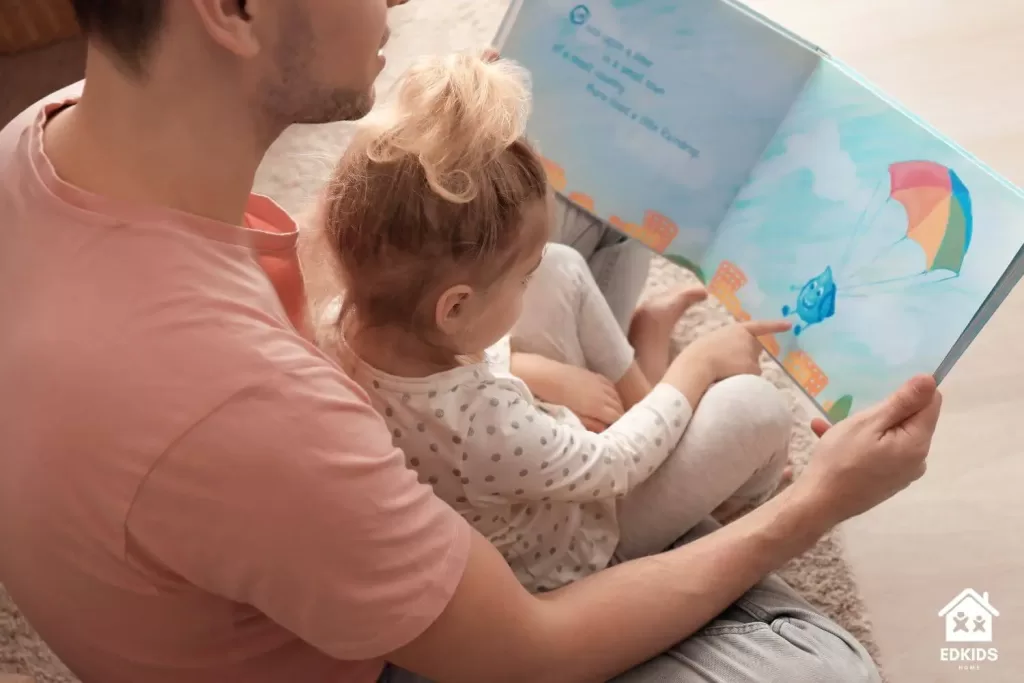
Reading books about gratitude is a great way to teach your kids the importance of being thankful. There are many books available that highlight the value of expressing appreciation and the positive effects it can have on our lives. Reading these books with your child can spark meaningful discussions about gratitude and its role in their well-being.
Examples
- “The Thank You Book” by Mo Willems
- “All the World” by Liz Garton Scanlon and Marla Frazee
9. Write a Gratitude Journal
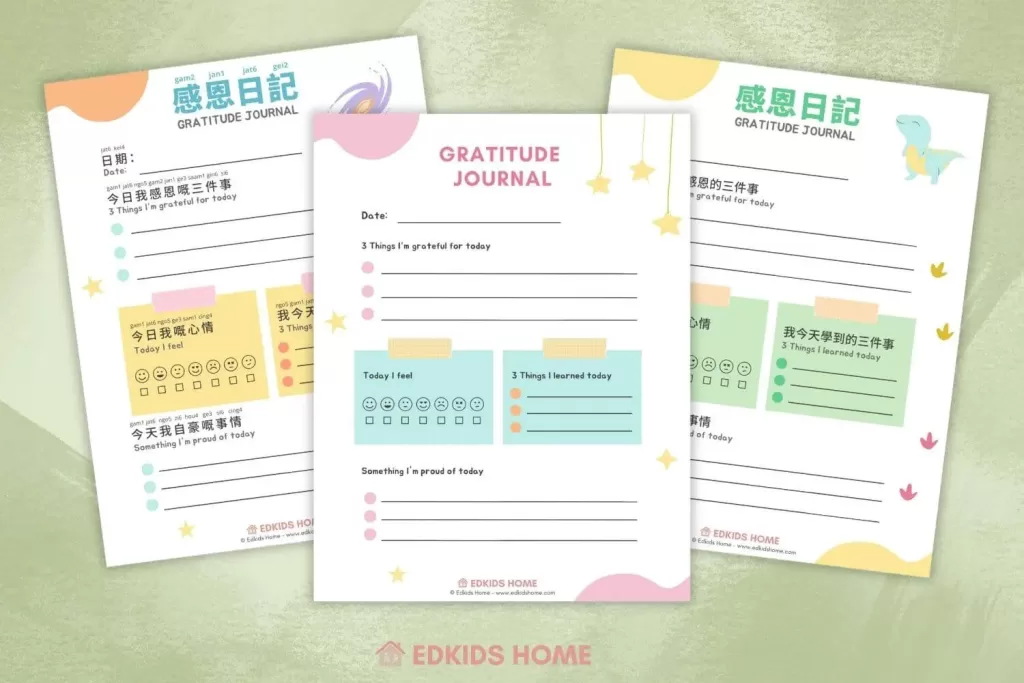
We're excited to offer a free Gratitude Journal for kids, aiming to help them appreciate the good things in life. This journal is not only fun but also educational, encouraging children to practice gratitude regularly.
It's designed to make them reflect on the positive aspects of everyday life and feel content and happy. Kids can simply write down what they're grateful for each day, shifting their focus to the positives.
We also offer them in both English and bilingual Chinese.
Download: Free Gratitude Journal for Kids
Example
- “Every evening, take a few minutes to write down three things you are thankful for in your Gratitude Journal.
- “You can also draw a picture or use stickers to express your gratitude.”
10. Appreciation of Nature

Teaching kids to appreciate the world around them is super important! Encourage your little ones to spend time in nature and soak in its beauty. It can be as easy as going for a walk in the park or having a nature scavenger hunt. This helps kids recognize and be grateful for the little things in life, while fostering a sense of wonder and gratitude for our amazing natural world.
Examples
- “Look at the beautiful colors of the sunset, let’s take a moment to appreciate it.”
- “Let’s go on a nature walk and see how many different kinds of flowers we can find.”
11. Celebrate Small Wins

Besides being grateful for big things in life, it's important to celebrate small wins too. Encourage kids to express gratitude for their accomplishments, no matter how small. This fosters a growth mindset and motivates them to keep striving for their goals.
Examples
- “You aced that math quiz! Let’s take a moment to celebrate and be grateful for your hard work.”
- “Even though you didn’t get first place in the race, let’s appreciate how much you’ve improved since last year.”
12. Mindful Moments

Teaching kids to be mindful and present in the moment is also a great way to foster gratitude. Encourage them to take a few minutes each day to focus on their breath and appreciate the little things around them. This practice can help your kids become more aware of their surroundings and find joy in simple moments.
Examples
- “Let’s take a moment to close our eyes and focus on our breath. What are you grateful for in this moment?”
- “While we wait for the bus, let’s take a mindful walk and appreciate the beauty of nature around us.”
13. Watch Videos and Movies that Inspire Gratitude
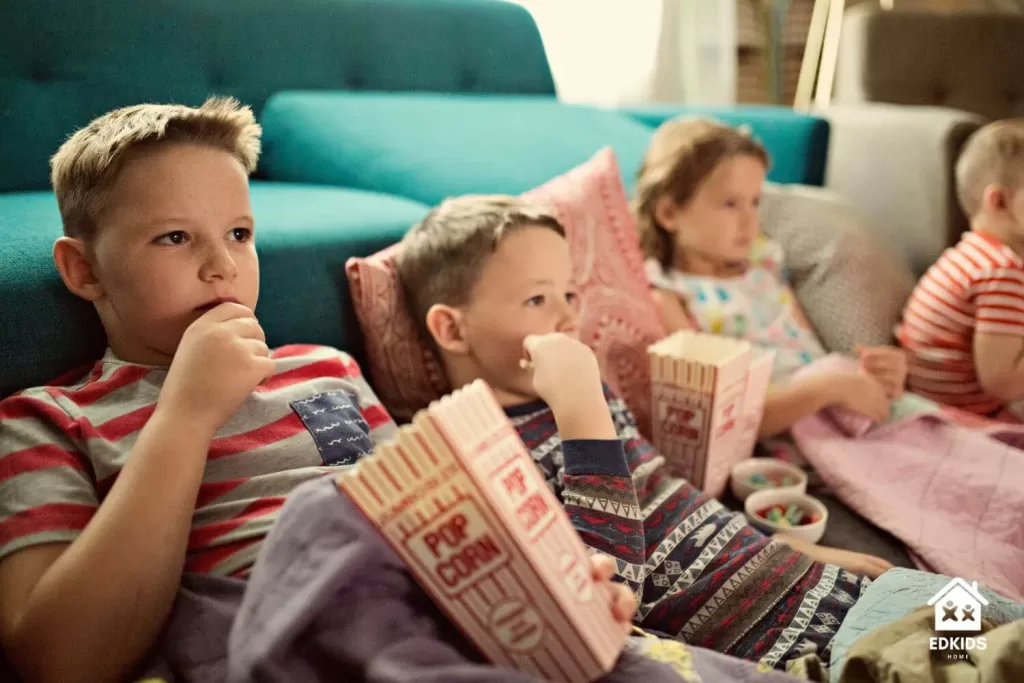
There are many videos and movies that showcase acts of kindness and gratitude. Watch these with your kids and discuss the positive effects of expressing gratitude. It can also be a great opportunity to talk about ways they can show appreciation in their own lives.
Check out Big Life Journal on Top 75 Growth Mindset Movies & Videos for Children.
Examples
- Daniel Tiger's Neighborhood on PBS Kids is excellent at teaching kids compassion and kindness toward others. This show is created for kids ages 2 and up.
- Grand Cartoons also provided A Moving Story About Gratitude
Footnotes
- Who benefits the most from a gratitude intervention in children and adolescents? Examining positive affect as a moderator ↩
- Gratitude and the reduced costs of materialism in adolescents ↩
- Being grateful is beyond good manners: Gratitude and motivation to contribute to society among early adolescents ↩
- The silver linings journal: Gratitude during a pandemic ↩
Conclusion:
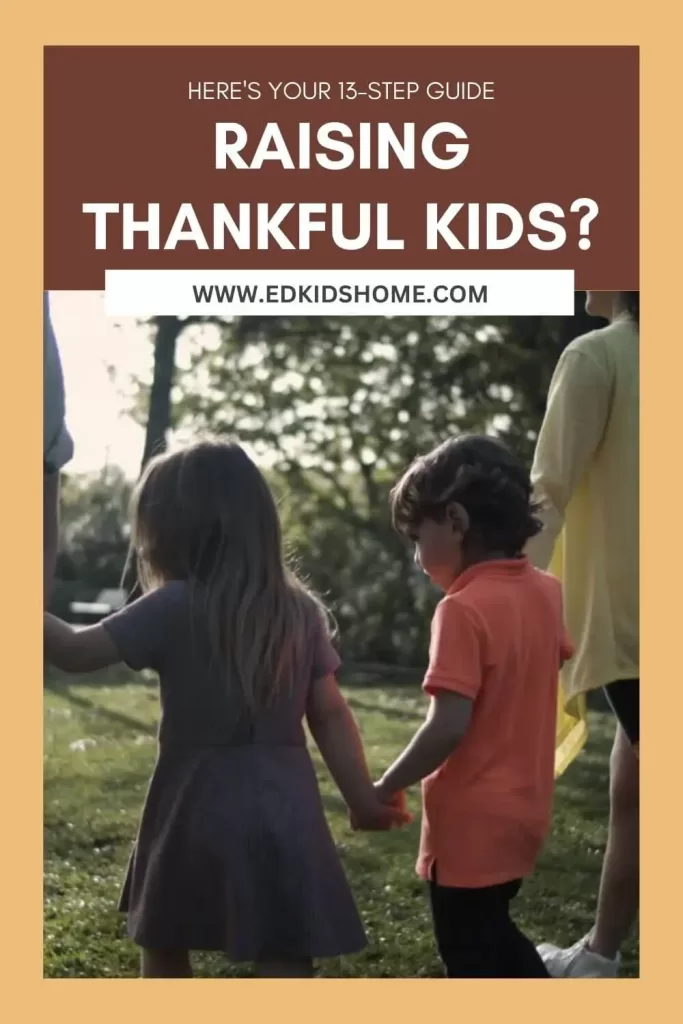
In conclusion, let's remember that these activities are not just for special occasions. They can easily become a part of our everyday routine, fostering a constant sense of gratitude.
Teaching kids the power of gratitude is a valuable life lesson that can truly transform their outlook. It helps them develop a more positive mindset, reduces stress and anxiety, improves their mental health, and ultimately leads to more fulfilling lives.
By modeling gratitude, sharing meals, keeping journals, volunteering, and practicing mindfulness, we can empower our kids to embrace this incredible trait.
So let's make it a point to teach our kids about gratitude and create a future that's filled with positivity and fulfillment for our entire family. Together, we can make a difference!
